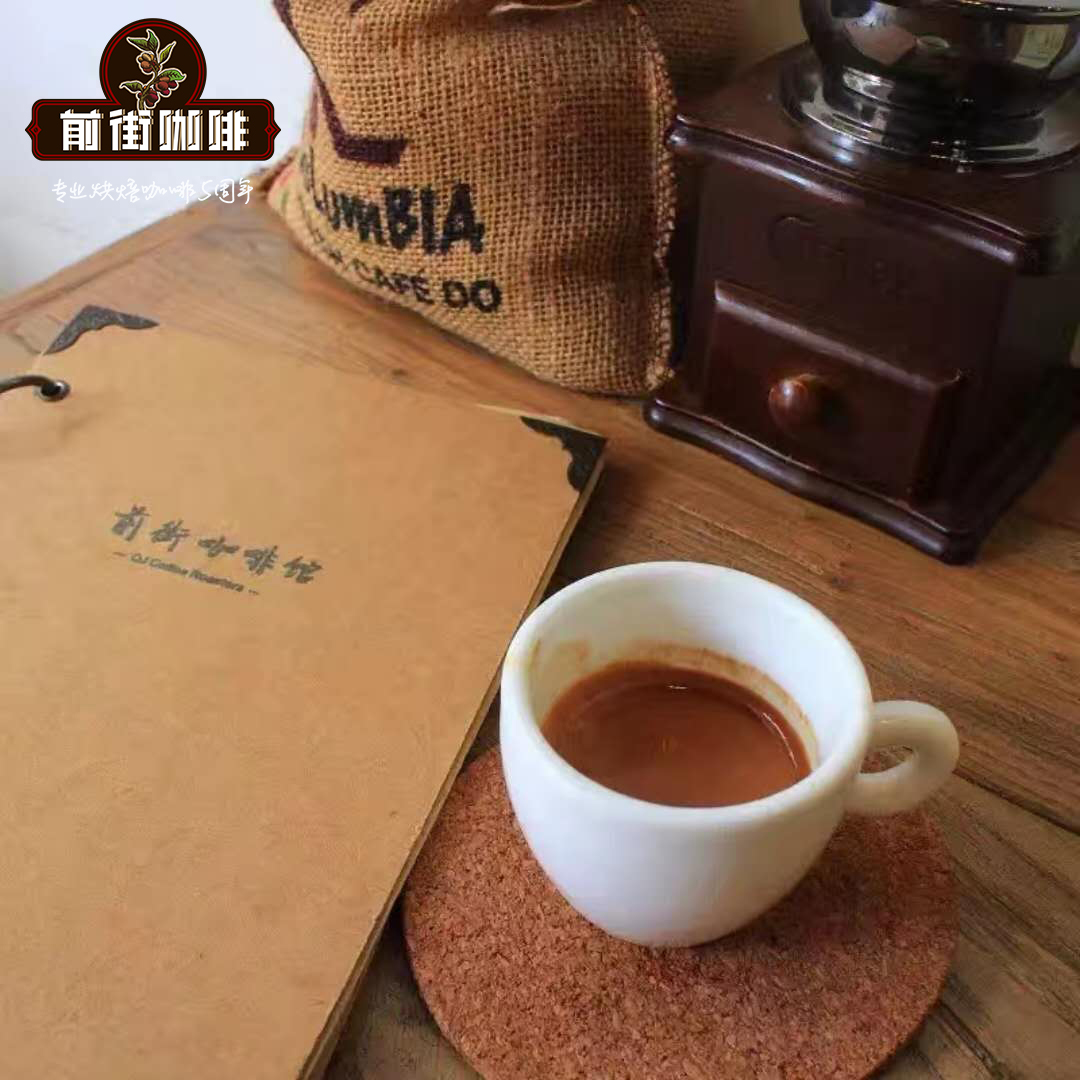Introduction to the varieties of Kenyan coffee beans SL28 and SL34

Professional coffee knowledge exchange more coffee bean information please follow the coffee workshop (Wechat official account cafe_style)
Summary of the origin of Kenyan coffee
Capital: Nairobi, Nairobi
Port: Mombasa Mombasa
Growers: nearly 700000 smallholder households
Acreage: small farmers (an average of less than 1 hectare), manors (an average of 30-40 hectares, large ones with hundreds of hectares)
Planting altitude: 1400-2000 +
Planting varieties: SL28/SL34, Ruiru 11, Batian, K7
Production season: October-January in main season and April-June in secondary season (fly crop)
Planting areas: Nyeri, Muranga, Kirinyaga, Meru,Embu, Kiambu and Thika in the middle and Kericho and Kisii in the west
Coffee is very different from county to county (county) in Kenya. Kenya is divided into 47 "counties" (county).
Kenyan coffee in different counties has distinct characteristics. Kenyan coffee trees are mostly planted at 1400-2000 meters above sea level and harvested twice a year. The growth areas include Ruiri, Thika, Kirinyaga and Mt. Kenya West, Nyeri, Kiambu and Muranga. Mainly in the foothills of Mt.Kenya and Aberdare. For example, Embu coffee characteristics, balance, citrus fruits, chocolate, apples, acidity. Nyeri coffee features, white grape, juicy, grapefruit and small tomato flavor, fruity, as sweet as caramel.
Kenyan coffee in different counties has distinct characteristics. Kenyan coffee trees are mostly planted at 1400-2000 meters above sea level and harvested twice a year. The growth areas include Ruiri, Thika, Kirinyaga and Mt. Kenya West, Nyeri, Kiambu and Muranga. Mainly in the foothills of Mt.Kenya and Aberdare. For example, Thika Kenya Sika Plateau coffee characteristics, balanced, citrus fruits, chocolates, apples, plum acid. Nyeri coffee features, white grape, juicy, grapefruit and small tomato flavor, fruity, as sweet as caramel.
Kenya washed beans
Kenyan water washing is a cyclic repeated treatment after fermentation. On the day of harvest, the best quality coffee cherries are selected, peeled and fermented. The fermentation time is 24 hours, and then washed with clean river water after 24 hours. Then, it is fermented again with clean river water for 24 hours, and then washed, so it is repeated 3 times for 72 hours, so it is called Kenyan 72-hour fermentation water washing treatment, referred to as K72. This treatment allows the coffee beans to ferment for a long time at low temperatures, so that the beans can have a brighter, cleaner but full flavor.
Can't wait to make a cup of Kenyan honey processing factory Asali to drink, strong tomato aroma, berry aroma, sweet and sour amplitude, fresh and sweet finish, and a hint of blackcurrant aftertaste. This coffee begins with sour and ends with sweetness. It is one of the favorite coffees of the editor.
Sun beans from Kenya Coffee producing area
Next, let's take a look at the traditional Kenyan coffee.
Sun exposure is less common on the market in Kenya, probably because of the excellent quality of Kenyan water washing, coupled with the sun loss rate and high labor costs, which can only be found in the special customized plans of some raw bean merchants. This bean is treated in the sun, which adds solidity and sweetness to the already rich and sour bourbon coffee in the process of exquisite sun exposure. With a limited number of sun batches, this coffee is completely dependent on the natural climate.
This breed of coffee is the missionary bourbon, and French missionaries brought bourbon trees to Kenya around 1892-1893. This native bourbon tree species, known as renchMission Varietal (French missionary species), avoids scientific improvements in the planting process and retains the original flavor of bourbon.
This coffee is not graded according to Kenya, which is probably due to the micro-batch, but it has a high defect rate and does not look good. The flaws in the traditional tanning method have reduced the appearance of this coffee, so what is its flavor? Let's have a try.
What's amazing is that this Kenyan coffee tastes good! Dry aroma with sun fermentation, dried fruit and vanilla, sipping can drink caramel, vanilla, comprehensive fruit, solid juice, finish with berries, strong jackfruit, coffee flowers. The overall performance is like the wild ancient morning taste of Africa, suitable for small sips and slowly taste, the complex aroma is difficult to give up ~
Appendix
The following are the two information cards used above to compare coffee beans. Interested friends can click on the link to view the detailed introduction, baking and cooking suggestions.
Origin of Kenyan Coffee: [French missionary bourbon in Haniyeh Manor, Kenya]
Country: Kenya
Area: card (Thika)
Processing plant: Haniyeh Manor (ChaniaEstates)
Altitude: 1525 m
Variety: French missionary bourbon species
Treatment: sun treatment
* * *
[Kenya Asali AA TOP exquisite 72-hour washing]
Country: Kenya
Kenyan Coffee Origin: Sika Thika
Processing plant: Asali honey processing plant
Altitude: 1550-1750 m
Soil: volcanic soil
Rating: AA TOP
Variety: sl-28,sl-34
Treatment: 72 hours washing
In the editor's words: the characteristic flavor of Kenya is strong sour flavor, especially the lightly roasted Kenyan washed coffee often has the sour aroma of tomatoes and berries, and if it is roasted too lightly, it will have the smell of grass and sour. It is not easy to bake and brew Kenyan coffee properly. You will find that the smell of honey is similar to that of honey in the wet fragrance, and the fragrance of flowers is complex and changeable. Whether it is sunburn or washed Kenyan coffee, the water temperature should not be too low, generally 88-90 ℃ is more suitable.
Important Notice :
前街咖啡 FrontStreet Coffee has moved to new addredd:
FrontStreet Coffee Address: 315,Donghua East Road,GuangZhou
Tel:020 38364473
- Prev

What famous coffee producing areas in Brazil are recommended by Brazilian coffee producing areas?
Professional coffee knowledge exchange more coffee bean information please follow the coffee workshop (Wechat official account cafe_style) Brazil coffee production area introduced Brazil coffee beans Brazil is the world's most important coffee producing area, accounting for the world's total output of 1 stroke 3, Brazil has 10 states produce coffee beans, due to regional and climate differences, the quality is inevitably good and bad, therefore, Brazilian coffee beans are divided into grades
- Next

Processing methods of characteristic flavor and taste of coffee beans in Duli Alba, Costa Rica
For more information on coffee beans, please follow the coffee workshop (Wechat official account cafe_style). The volcanic soil of Duli Alba, Costa Rica is very fertile and well drained. It is the first country in Central America to grow coffee and bananas because of its commercial value. Coffee and bananas are the country's main exports. In 1729, coffee was introduced from Cuba to Costa Rica
Related
- Does Rose Summer choose Blue, Green or Red? Detailed explanation of Rose Summer Coffee plots and Classification in Panamanian Jade Manor
- What is the difference between the origin, producing area, processing plant, cooperative and manor of coffee beans?
- How fine does the espresso powder fit? how to grind the espresso?
- Sca coffee roasting degree color card coffee roasting degree 8 roasting color values what do you mean?
- The practice of lattes: how to make lattes at home
- Introduction to Indonesian Fine Coffee beans-- Java Coffee producing area of Indonesian Arabica Coffee
- How much will the flavor of light and medium roasted rose summer be expressed? What baking level is rose summer suitable for?
- Introduction to the characteristics of washing, sun-drying or wet-planing coffee commonly used in Mantenin, Indonesia
- Price characteristics of Arabica Coffee Bean Starbucks introduction to Manning Coffee Bean Taste producing area Variety Manor
- What is the authentic Yega flavor? What are the flavor characteristics of the really excellent Yejasuffi coffee beans?

